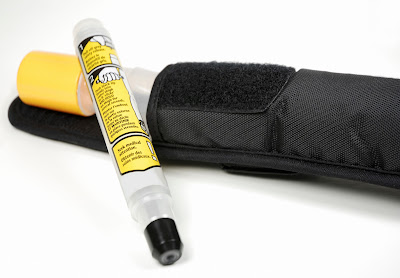PBIRx®
Intelligent Solutions in Pharmacy Benefits
612 Wheelers Farms Road, Milford, CT 06461
(888) 797-2479
Long–acting insulin (basal insulin) plays an extremely important role in the treatment of diabetes in children and adults. Lantus was the first basal insulin approved by the FDA in 2000 and has dominated the insulin market for years. Lantus had significant and consistent price increases throughout its tenure including two in 2013, which increased its cost by over 15 percent. The cost of this life saving medication has taken a dramatic economic toll on payers and patients alike. The impact of its price increases was most dramatic because diabetes is an ever growing epidemic that accounted for $245 billion in health care expenses in 2012. Now there is finally some relief for those who have been so affected by the costs of insulin.
Basaglar’s current list price for a pack of five pens is $316.85, which puts it at a 15 percent lower cost to Lantus (Lilly/BI) and Toujeo (Sanofi), a 21 percent lower cost to Levemir (Novo Nordisk, insulin detemir injection) and a 28 percent lower cost to Tresiba (Novo, insulin degludec). Plan Sponsors offering pharmacy benefits to their employees or members need to be talking to their PBMs and Pharmacy Benefit consulting partners to determine current Lantus utilization along with PBM Lantus rebates to determine if there is a significant cost savings by preferring Basaglar.
Consulting firms like PBIRx, that focus both on how to achieve positive health outcomes and how to lower prescription drug costs for their clients, will discuss strategies that save money and improve health, versus PBM strategies that focus solely on optimal PBM profits. Based on individual client’s needs and cultures, PBIRx’s strategies will include taking advantage of Basaglar’s lower cost while focusing on what is best for each client, i.e. do not restrict Lantus, but offer lower copay for Basaglar; implement exclusion that requires Basaglar for all new long acting insulin utilizers; implement Basaglar as first step for long acting insulin, etc.
Bagaslar has already been introduced in several countries under the name Abagaslar. In some countries switching requires a managed care approach with blood glucose monitoring along with possible dosage adjustment. Currently in the U.S., the doctor must write a Basaglar prescription; though many states are enacting laws and regulations that allow pharmacists, sometimes only with patient consent, to substitute with the new, or a similar product.
Lantus cost per Rx is estimated at $600 to $800 per prescription and is in the top ten of plan drug costs. With the estimated current Basaglar 15 percent lower and conceivably 30 percent lower cost in the future, clients are looking seriously at this savings opportunity. CVS/Caremark and United Health have already moved Lantus off of the 2017 national formularies in favor of Basaglar
At the IDF conference in December, Dr. Matthew Riddle estimated that “50 percent of all people with type 2 diabetes would benefit from biosimilar insulin glargine (Bagaslar), compared to just 25 percent of patients benefiting from the reduced hypoglycemia and flatter glucose profile seen with next-generation brand name basal insulin analogs such as Novo Nordisk’s Tresiba and Sanofi’s Toujeo.” https://diatribe.org/fda-approves-new-insulin-glargine-basaglar-first-biosimilar-insulin-us.
PBIRx can discuss with clients how to manage these new generation insulins to achieve protection of cost trends while allowing access to any patient that may benefit. PBIRx does this through their custom RxSAVINGS clinical programs that are carefully constructed by their staff of PharmDs to utilize the latest product information, treatment guidelines, and the expertise of the prescribing physician.
PBIRx has identified all Lantus utilizers for all of our clients by plan cost, number of prescriptions, number of members and number of prescribers. Along with our clinical team of pharmacists and the client’s PBM clinical team, strategies are currently being discussed so that our clients and their members can take advantage of savings sooner than later.





